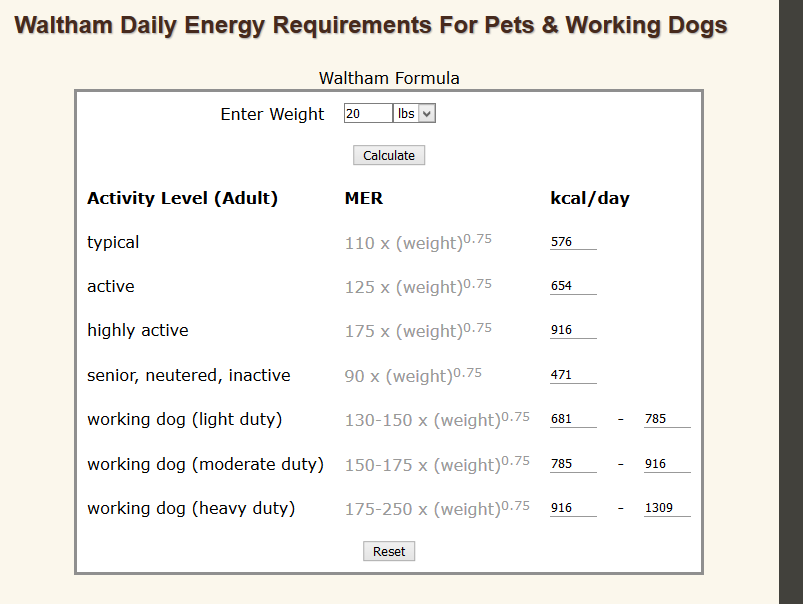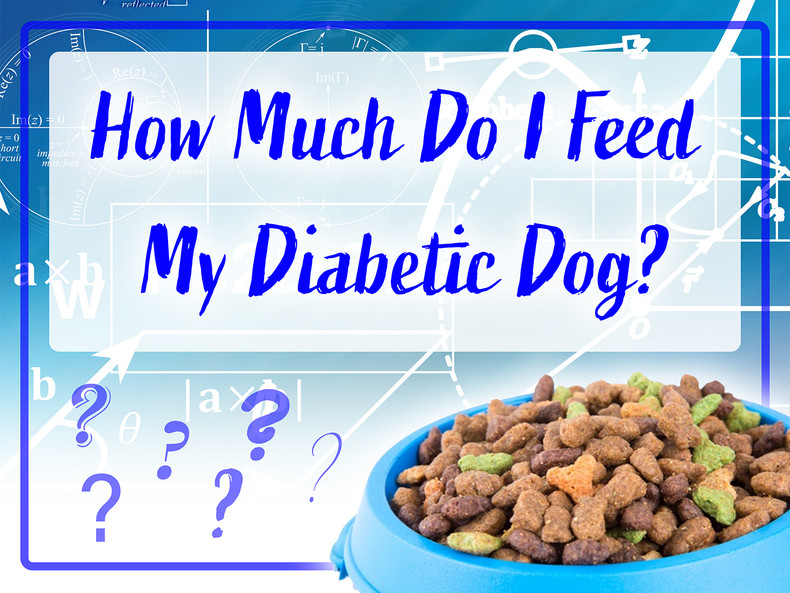How Much Do I Feed My Diabetic Dog
We have chatted in previous posts about what to feed, what to cook, what treats to give, but it was pointed out to me that we have never discussed how to calculate how MUCH of any commercial food to feed. So, thank you Madeline for the email and the topic for today’s post!
Where do we start? We start with the question what is my dog’s ideal weight. Not, how much he or she weighs now, but what is my dog’s IDEAL weight. Many starting out are often times trying to get the weight that their pup has lost back on. Some are trying to help their pup lose some excess weight that they have gained along the way. Whichever the case, you will need a calorie calculator. You will enter your dog’s IDEAL weight in the calculator so that you are feeding the proper calories for that weight. In our group ( CDSI) we use the Waltham calculator. You will want to scroll down the page to the Waltham calculator. Here is the link: https://www.mycockerspaniel.com/mer.htm
Here’s what it looks like. We are using an ideal weight of 20 pounds for our examples today:

You will see in the picture that using the Waltham Formula, we can choose our pup’s activity level and get the proper calories to feed them each day. If you have a younger pup that takes walks, plays and runs around in the yard or just has good energy, I’d use the “typical” calories a day number. Being that Canine Diabetes is usually a later onset disease (not always), we mostly see requests for the “senior, neutered, inactive” calories a day. Whichever category your pup falls into, you will use the number in the kcal/day column as your daily calorie needs.
Next, because we feed twice a day, we will divide that number by 2 to get the calories per meal. Are you with me so far? I hate math, so I’ll try to make this as painless as possible! LOL
Let’s choose the “typical” activity level for our example. That means 576 calories a day divided by 2 for 288 calories each meal. It’s easy so far right? The most accurate way to feed your pup is to weigh the food on a digital scale, so we will figure the portions in grams.
Let’s start with kibble (dry food in the bag). Here’s what you need to know next, how many kcal/kg (found on the bag) are in the food? I’ll use a food that has 3,122 kcal/kg. Now we convert that number to calories per gram (to be weighed on your digital scale). Just divide that number, in this case 3,122 by 1,000 to get 3.122 calories per gram. (You can also just move the decimal point.)
Now we know how many calories per gram and we know how many calories for each meal so we just divide the calories per meal by calories per gram to get 92.24 grams of kibble each meal. So we would feed 92 grams (I rounded that number) of kibble at each meal. Not so bad right? Here’s just the equation:
Calories per day (576) divided by 2 (288) divided by calories per gram (3.122) = grams per meal (92)
Now we move on to canned (wet food). We need to know the same information as for dry. How many kcal/kg is in this food. Many manufacturers are including this information on the label, so the conversion is the same for calories per gram. On a food that has 1,097 kcal/kg, the calories per gram will be 1.097 or 1.1 (rounding up) calories per gram. So if you are feeding just canned food, you would feed 261.82 (262) grams of this wet food for your 288 calorie meal.
Combination of wet and dry food meal. Here’s where it gets a little confusing. If you are feeding a combination of wet and dry foods, I will walk you through a starting mix which would be half the calories from wet food and half from dry food each meal. For this combination, you will need 144 calories (288 calories per meal divided by 2) from dry food and 144 calories (288 calories per meal divided by 2) from canned food. You will take the information that you have gathered above and just do a couple simple calculations.
144 divided by 3.122 = 46 grams of dry food (kibble)
144 divided by 1.1 = 131 grams of canned (wet food)
That would be your mix for half the calories coming from dry food and half from canned food.
Now if your canned food only gives you kcal per can then you will divide the number of ounces in the can by the kcal to get the calories per ounce. There are 28.35 grams per ounce so in a 10 ounce can that has 260 calories per can, you will divide the 260 calories by the ounces which gives you 26 calories per ounce. Now to convert the ounces to grams, we divide the calories per ounce by 28.35 to get .9171 calories per gram. The .92 (I rounded up) is the number of calories per gram that you’d use to calculate the canned portion of a combination meal. Have I mentioned that I hate math?
I think that is enough for one day… I have a headache, how about you? If this is “clear as mud”, please feel free to comment below or email me for clarification.
You’ll notice that for most of the products, previous blog entries or groups that I mention, the text is linked to a website that you can purchase that item or a link to join the group mentioned. Just click on the colored text (red or blue, depending what device you are on) and it should take you right to the item or group. If you have any thoughts or ideas for topics that you’d like to see covered here, please feel free to comment below or send me an email at NancyForPetTest@PharmaSupply.com. As always, please “like” this blog post or any of the others that have helped you or just refreshed your memory. Look for new posts every Monday, Wednesday and Friday!
Until next time…

